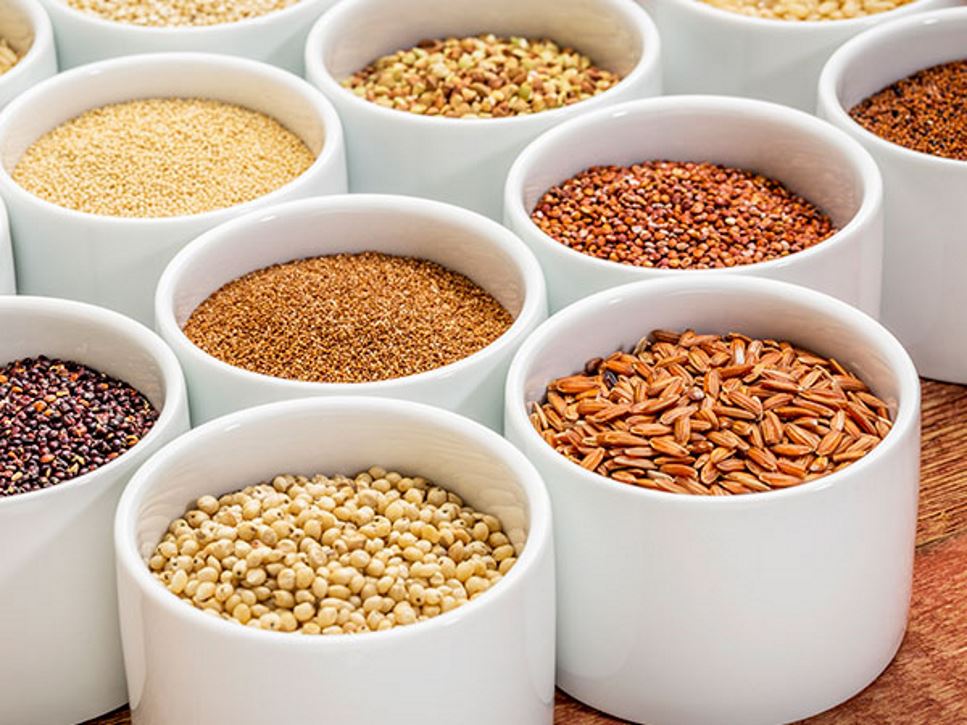Next time you go shopping, help keep your family nutrient-focused by choosing whole grains over refined grains. Whole grains (such as buckwheat, brown rice and oatmeal) are nutritious because they contain the fiber-rich outer bran layer, the nutrient-packed germ and the starchy endosperm. Refined grains (such as white bread, white pasta and white rice) contain only the endosperm.
In addition to their dietary fiber content, which promotes digestive and heart health, whole grains also provide vitamins and minerals, antioxidants and other healthy plant-based nutrients. No matter which whole grain you prefer, make sure the ingredient list includes whole grains or that the label reads "100% whole grain."
Amaranth
A gluten-free grain, amaranth is considered a complete protein because it contains all of the essential amino acids in proportions that humans need — including lysine, which most grains tend to lack. Additionally, a ½ cup of cooked amaranth is a good source of minerals such as iron and selenium. In South America, amaranth is popped like miniature popcorn. Most kids love pasta, and amaranth can be used as a substitute for couscous or orzo. Use amaranth flour to make tasty baked goods such as zucchini bread, carrot cake or banana nut muffins and pancakes.
Barley
Barley is a fiber powerhouse. Hulled barley has more fiber-rich bran than pearled barley, but both contain beta-glucan soluble fiber that slows the absorption of glucose, and helps to keep blood sugar levels stable, thus providing sustained energy throughout the day. Barley also contains selenium, a powerful antioxidant. Barley is great added to soups or used to make pilaf. It can even be made into a hot breakfast cereal. Hulled barley will take more time to cook than pearled barley (which is not a whole grain), about 50 to 60 minutes.
Oats
Oats also contain beta-glucan fiber which can lower cholesterol and help support the immune system. Oats boast polyphenol compounds that laboratory studies show have antioxidant properties. Besides the age-old favorite oatmeal for breakfast, oats can be added as a binder to meatloaf and burgers. Oats also work well in baked goods including oatmeal cookies, as a crunchy topping to crisps and crumbles, and even in casserole dishes.
Quinoa
Like amaranth, quinoa contains all nine essential amino acids in the proper portions and is gluten-free. Moreover, a ½ cup of cooked quinoa is an excellent source of magnesium and contributes iron and folate. And, quinoa is easy to make. While not required, toasting quinoa before boiling it in liquid enhances flavor, as does cooking it in vegetable broth. Quinoa can be made in a rice cooker, too. Before cooking, use a fine mesh strainer to rinse the quinoa to remove compounds called saponins that can give the quinoa a bitter taste. Quinoa is fun for kids because it pops in the mouth when chewed and comes in several colors: beige, red, black and even purple. Mix quinoa with beans or nuts for a tasty side dish or add to salads and stir-fries.
Teff
Another gluten-free grain, teff provides about 5 grams of protein per half cup. Teff is a great source of thiamin (a B vitamin), and also is a good source of fiber, iron and magnesium. Teff grains are tiny and have a mild nutty flavor. It's an indispensable grain in Ethiopia where it's used to make the traditional flat bread, injera, and now it's grown in several areas of the United States. Cook the grain into a creamy hot cereal or a tasty polenta. You also can mix teff with veggies for a side dish.
References
Find a Nutrition Expert
Looking for credible nutrition information and recommendations? The Academy of Nutrition and Dietetics' network of credentialed food and nutrition practitioners are ready to help!


